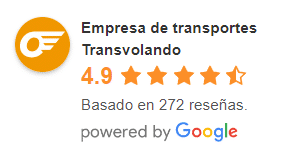Dangerous Goods A.D.R in Transportation
We work every day to ensure that your shipments are fast and secure, with customized solutions that guarantee your peace of mind. So you don’t have to worry about anything else. So you don’t have to worry about anything else.
Your trust is our most valuable commodity.
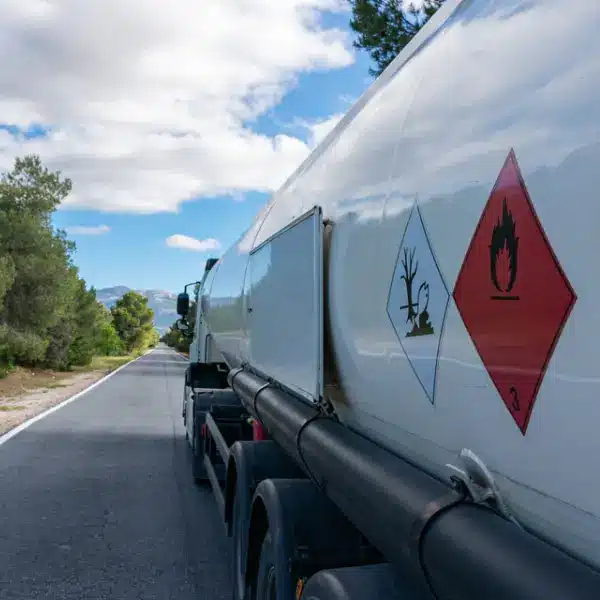
Does your company need to transport dangerous goods on a regular or occasional basis?
Do you want to ship different types of dangerous goods?
Would you like to count on our advice for the safe and legal transportation of your goods?
At Transvolando we have extensive experience in the transport of dangerous goods. We are extremely rigorous with protocols to maintain the safety of your shipment and the health of our employees.

Do you need a customized transportation solution?
We have a transportation solution tailored to you. Request your quote now and discover how we can assist you.
What are dangerous goods?
These are those goods which, in their production process, handling, storage, movement or in their own natural state, may give off gases or vapors that are harmful to health or easily ignited.

What types of dangerous goods are there?
The UN group of experts classifies and constitutes the document from which the current regulations governing the transport of dangerous goods by road at both national and international level originate.
Depending on the requirements for their transport, a distinction is made between restrictive dangerous goods, which are explicitly named and require express authorization, and non-restrictive dangerous goods, which allow their transport by general groups. According to the classes of dangerous goods, the established categorization is as follows:
Class 1. Explosive materials and objects
It includes the most dangerous goods, not only the explosive goods themselves, but all those that under certain conditions can cause explosions and even fires, either by exposure to high temperatures, or by friction or other circumstances that may modify their chemical nature. Due to its high hazardousness, the transportation of this type is specifically regulated. Within this group are pyrotechnic materials, such as rockets and firecrackers.
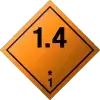


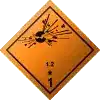
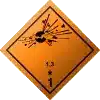
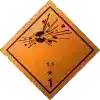
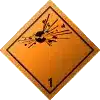
Class 2. Gases
This typology includes a varied group of substances with very different risks, such as toxicity or flammability, but which have specific gaseous characteristics under certain conditions. Compressed gases such as nitrogen and oxygen, liquefied gases such as butane or propane, pressurized gas cartridges such as aerosols, etc. are of this type.
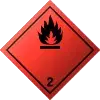


Class 3. Flammable liquids
They are a type of liquid that, when in contact with a flame or high temperature source, can catch fire. This category includes liquid fuels, such as gasoline or diesel fuel, as well as alcohols, varnishes, etc.
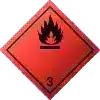
Class 4.1. Flammable solids
They are substances in solid state that under the influence of heat can burn or spark. Some may also generate toxic gases during combustion. This group includes woods, celluloids, phosphorous compounds, etc.
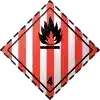
Class 4.2. Substances susceptible to spontaneous ignition
This category contains those products that can either ignite spontaneously when in contact with air in small quantities, or not ignite at all, but undergo heating. White phosphorus, greasy and oily tissues, etc. are of this type.
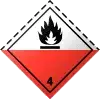
Class 4.3. Substances that give off flammable gases on contact with water
Here we find materials that react with water, releasing flammable gases that can cause explosions when in contact with air. Here we find substances such as metal hydrides, sodium, potassium, etc.
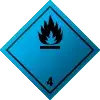
Class 5.1. Oxidizing or oxidizing substances
These are materials that are not combustible in themselves but which, by releasing oxygen, cause the combustion of other materials. For example, stabilized hydrogen peroxides, chlorites, percarbonates, etc.
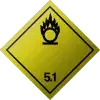
Class 5.2. Organic peroxides
These are materials like the oxidizers but, as they are more unstable, they have a greater probability of combustion, in addition to being combustible.
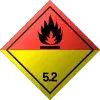
Class 6.1. Toxic materials
This type contains a wide variety of substances that chemically do not have much in common, but all of them are characterized by a high degree of toxicity to humans, the environment or animals. Examples of this category are cyanides, arsenic compounds, etc.
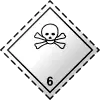
Class 6.2. Infectious materials
They are those that contain pathogens that cause disease to both animals and humans. Here we include microorganisms, such as viruses and bacteria, etc.
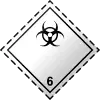
Class 7. Radioactive materials
These materials emit certain particles and radiation that cause damage to cellular tissue. Here we have nuclear fuels, radioactive isotopes, etc.
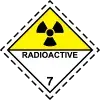
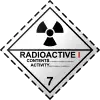
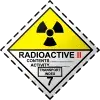
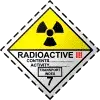
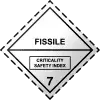
Class 8. Corrosive materials
Due to their composition, when they come into contact they cause damage to the skin and mucous membranes, and in case of leakage, they can cause damage to the elements with which they come into contact. Corrosive acids and salts fall into this category.
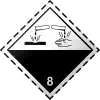
Class 9. Hazardous materials and other dangerous goods
During transportation, they may pose hazards different from those contemplated in the previous typologies.

Last class: Toxic and hazardous wastes
The latter category includes all containers that have contained any of the substances described in the preceding sections. Their transportation must also be specifically regulated to avoid damage.

Who regulates the transport of dangerous goods?
In the first instance, it is the MITMA, marks the regulations governing the transport of dangerous goods, who regulates this type of transport as we can see in the Royal Decree 97/2014, of February 14 published in the BOE. There are different organizations such as ADR (European Agreement concerning the International Carriage of Dangerous Goods by Road), RID for international transport of dangerous goods by rail, IMDG (International Maritime Dangerous Goods) applies to transport by international sea or ICAO for transport by air.
In any case, the transport company and the driver of a vehicle transporting dangerous goods must inform himself about the different regulations on dangerous goods loads.
What information must the consignment note accompanying a dangerous goods transport contain?
When carrying out a transport of this type we must consider the dangerous goods transport documentation and the ADR danger labels.
1- UN number which must be preceded by the letters “UN”.
2- Official shipping name and technical data sheet.
3- The label model numbers must be indicated. For explosive materials, it must also indicate the classification code and hazard labels. For radioactive materials, class number “7”. For lithium, UN numbers 3090, 3091, 3480, and 3481 are class number “9”.
4- “GE” packing group
5- Number of packages and description .
6- Total quantity of each dangerous good together with the UN number.
7- Name and address of the sender(s).
8- The name and address of the addressee.
9- Declaration in accordance with the provisions of any special agreement.
10- When applicable, the tunnel restriction code in capital letters should also appear.
Transvolando has the guarantees of dangerous goods transport companies offering solutions and security for our customers.
Your shipment could already be on its way
Trust your shipments to our team of experts. We prioritize seriousness, commitment, and well-done work. To achieve this, we rely on an innovative system of planning, optimization, and tracking so you can completely relax about your shipments. Start saving time and money now!

